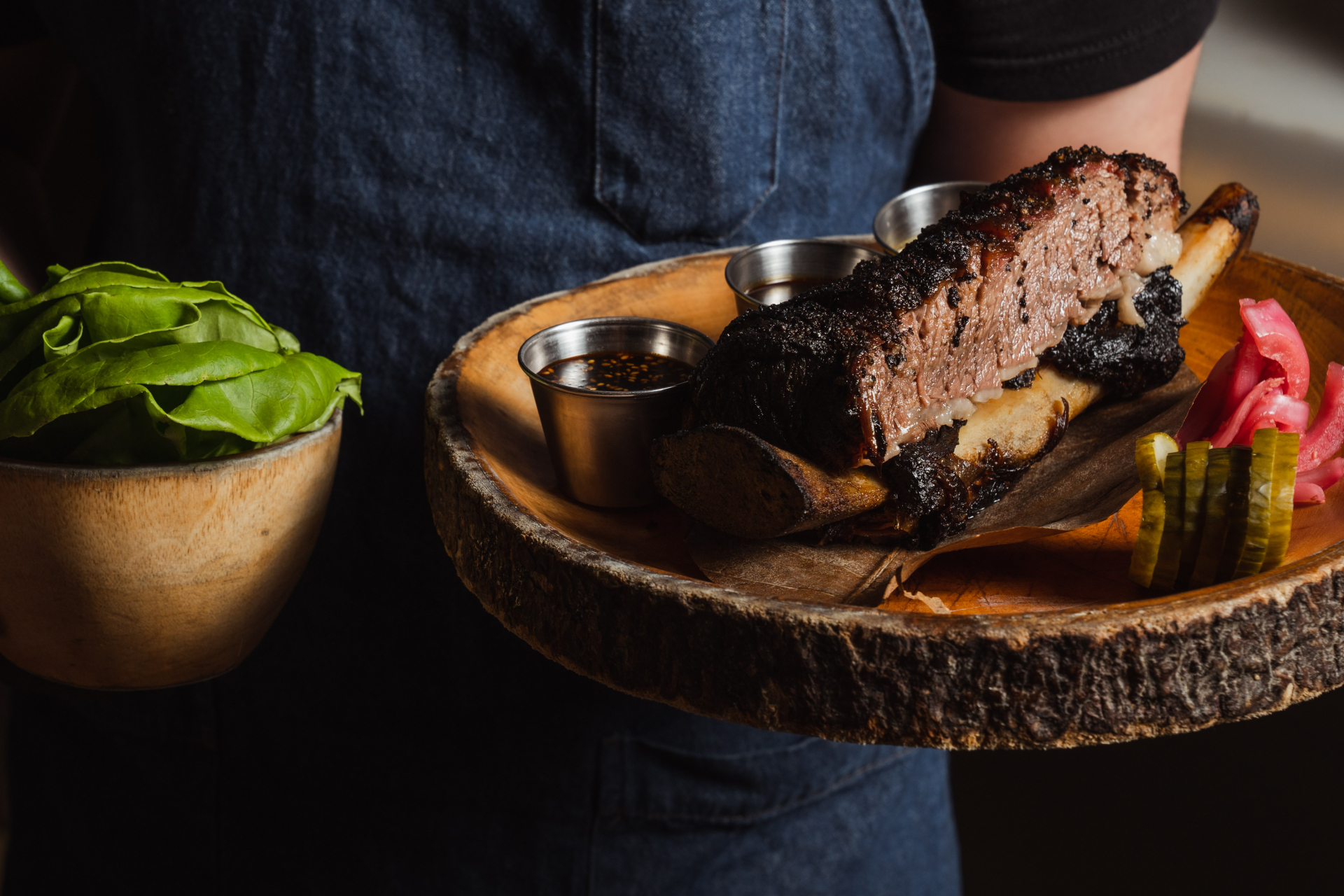
With its smoky fragrance, wood-fire cooking has an unmatched flavor. To learn how to craft wood-fire cooking with Asian ingredients and techniques, we interviewed corporate Executive Chef Chris Arellanes of KYU. A wood-fired, Asian-inspired restaurant with locations in Miami, Las Vegas, New York City, and Mexico, KYU has a wide-spanning menu that highlights wood-fired Asian cuisine.
The best Asian ingredients for wood-fire cooking

The menu at KYU is expansive, featuring culinary influences from Japan to Southeast Asia. Japanese ingredients are a particularly strong area of focus, highlighted by yuzo kosho, black sugar, and myoga (Japanese ginger) on the menu. Whole Japanese sweet potatoes are cooked with buttered black sugar and Parmesan cheese. A pork belly pastrami is served with miso mustard. And a whole head of roasted cauliflower is blistered in the wood-fire and flavored with goat cheese and shishito-herb vinaigrette. Many of the dishes at KYU highlight the mixing of flavors: sweet with savory or acidic with fatty.
While meat dishes at KYU are prevalent on the menu, some of Arellanes’s favorite ingredients to cook are vegetables and shellfish. “I love cooking veggies and different types of shellfish over the grill. They are delicate and take finesse,” explained Arellanes.
Finally, the key to achieving flavor for more delicate ingredients likes vegetables is high temperature and the right wood. “Apple wood, Cherry wood, Hickory, & Oak. Hotttt!” Arellanes explained. “We keep it as hot as possible to achieve consistent cooking.”
How to balance flavors

While a high temperature is crucial for wood-fired cooking, for the right balance, you also want to be careful not to burn anything, leaving it bitter. “Never cook over an open flame unless you are trying to achieve a quick char and you are okay with a sort of carcinogenic flavor,” said Arellanes. “You should always set your coals and work over a nice, even, hot coal bed.”
Because of the expansive range of culinary influences at KYU, Arellanes believes finding that balance takes not only experience but also precision. You can’t just throw ingredients together and hope for the best. One really has to understand flavors and how to build flavors. That, Arellances advises, can take years.
But it’s also important to experiment and to cook seasonally. The wood-fire cooking isn’t just for hearty meats like pork belly or beef short rib. When properly cooked and balanced, delicate ingredients can be great. “We are currently working on our summer menu and have a really cool sambal grilled ocean trout with coconut curry and hakurei turnips,” said Arellanes. “I love this dish because it really showcases grilling technique, especially with such a delicate fish that has been marinated and is easy to burn and overcook.”



